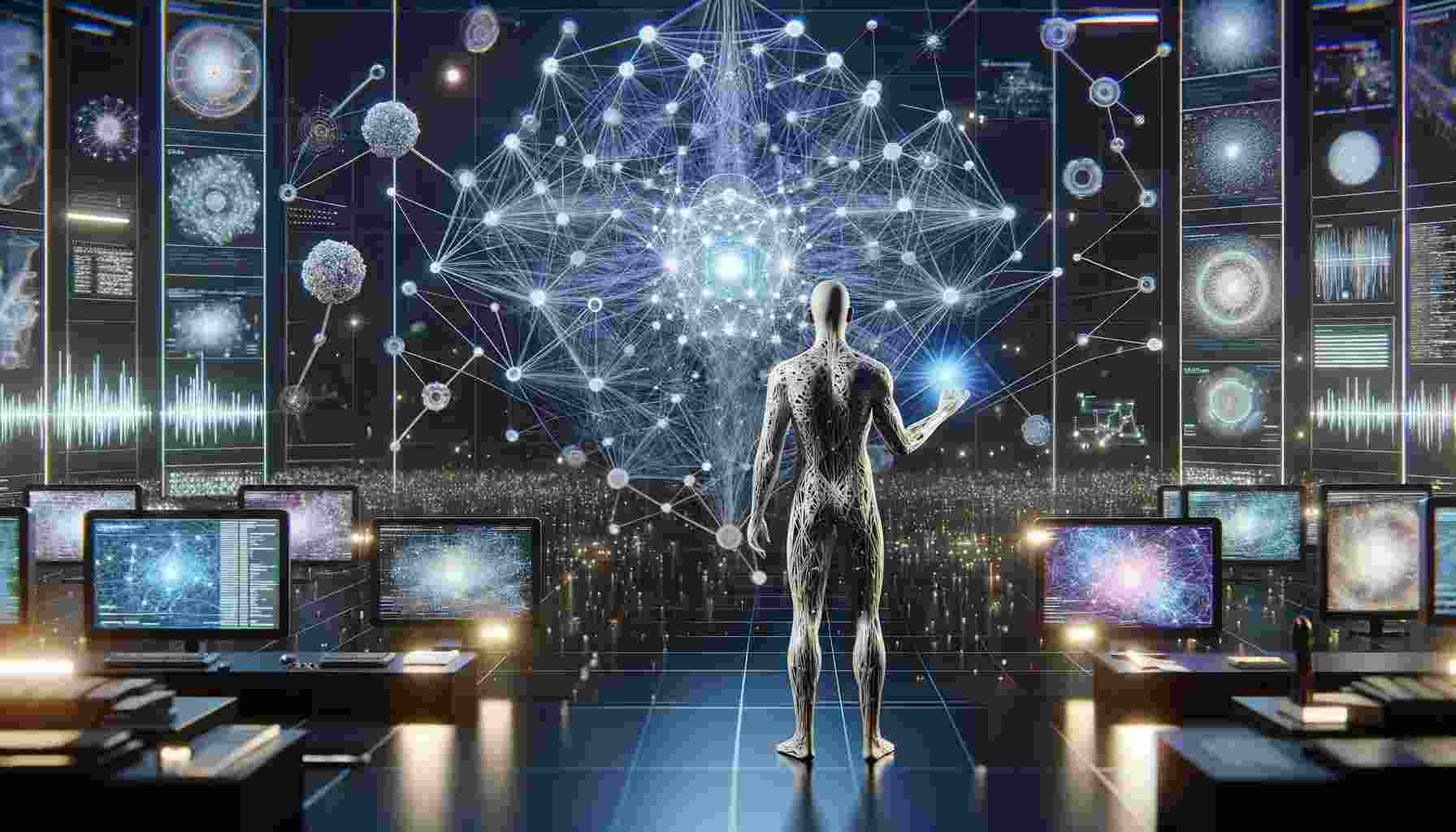What is a pretrained model? It is a cornerstone in the field of artificial intelligence (AI). These models, which have been previously trained on large datasets, serve as a starting point for developing new AI applications.
Looking to learn more about pretrained models? Read through this article written by the AI savants at All About AI.
Why Are Pretrained AI Models Used?
Pretrained models are instrumental for several reasons.

Time and Resource Efficiency:
One of the primary reasons for using pretrained artificial intelligence models is their ability to save significant amounts of time and computational resources. Training a model from scratch requires a lot of data and processing power.
Pretrained models, having already been trained on large and diverse datasets, eliminate the need for this extensive initial training phase, allowing developers and researchers to deploy AI solutions faster.
Enhanced Accuracy:
Pretrained models often provide a higher level of accuracy, especially in tasks where available data is limited. Since these models have already learned complex patterns and features from large datasets, they can apply this knowledge effectively to new, similar tasks.
This pre-acquired knowledge helps in achieving better performance compared to models trained from scratch on smaller datasets.
Overcoming Data Scarcity:
In many AI applications, especially in niche fields, gathering a large and diverse dataset for training is challenging. Pretrained models come in handy in such scenarios.
They can generalize their pre-acquired knowledge from extensive datasets to work effectively even on smaller, domain-specific datasets, thus overcoming the hurdle of data scarcity.
Prevention of Overfitting and Underfitting:
Pretrained models help in reducing the risks of overfitting and underfitting, common issues in machine learning. Their ability to generalize from previous training on vast datasets ensures a more robust model performance when applied to new tasks, compared to models trained from the ground up on limited data.
How Are Pretrained Models Advancing AI?
Pretrained models are pushing the boundaries of AI by enabling more complex and sophisticated applications. They have enhanced the capabilities of machine learning algorithms, making them more efficient and effective.
Facilitating More Complex Applications:
Pretrained models have opened the door to more complex and sophisticated AI applications. They have laid the groundwork for advanced machine learning tasks that were previously infeasible due to limitations in data or computing resources.
This advancement is leading to more innovative and impactful AI solutions across various industries.
Improving Efficiency and Effectiveness:
These models have enhanced the efficiency of machine learning algorithms. By starting from an advanced baseline, pretrained models streamline the development process, making algorithms quicker to train and more effective in their performance. This efficiency is crucial in deploying AI solutions at scale.
Democratizing AI Access:
Pretrained models are instrumental in democratizing AI. They provide smaller organizations and individual developers access to advanced AI technology without requiring extensive computational resources.
This wider access is fostering innovation and creativity across a broader range of sectors and communities.
Enhancing Transfer Learning:
Pretrained models are a key component in transfer learning, where a model developed for one task is reused as the starting point for a model on a second task.
This approach has significantly advanced the field of AI by promoting the reuse of existing models, thereby making AI development more sustainable and resource-efficient.
Where to Find Pretrained AI Models?
Several platforms and libraries offer pretrained AI models. Prominent examples include TensorFlow, PyTorch, and Hugging Face. These repositories provide a wide range of models trained on various tasks, making them accessible for researchers and developers to implement and customize according to their specific needs.
Real-World Applications of Pretrained Models in Natural Language Programming:

In natural language programming, pretrained models have revolutionized tasks such as text classification, sentiment analysis, and language translation.
They have enhanced chatbots, automated customer service responses, and even contributed to the development of advanced AI assistants.
Text Classification:
Pretrained models have significantly improved the accuracy and efficiency of text classification tasks.
Applications such as spam detection, topic categorization, and sentiment analysis in social media posts have become more sophisticated and reliable due to these models.
Language Translation:
Language translation services have benefitted immensely from pretrained models. They have enhanced the quality of machine translations, making them more contextually accurate and fluent, thus bridging communication gaps across different languages and cultures.
Chatbots and Virtual Assistants:
The development of chatbots and virtual assistants has been revolutionized by pretrained models.
These models have enabled more natural and context-aware interactions, enhancing customer service experiences and personal assistant functionalities.
Content Generation and Summarization:
Pretrained models are used in generating and summarizing content. They assist in creating coherent and contextually relevant text, which is particularly useful in applications like news summarization, content creation for websites, and automated report generation.
Speech Recognition:
In speech recognition, pretrained models have significantly improved the accuracy of transcribing spoken language into text.
They are widely used in voice-activated assistants, transcription services, and accessibility tools for those with speech or hearing impairments.
Examples of Pretrained AI Models:
Popular pretrained models include BERT (Bidirectional Encoder Representations from Transformers) for understanding the context in language, GPT (Generative Pretrained Transformer) for generating human-like text, and ResNet for image recognition tasks.
BERT (Bidirectional Encoder Representations from Transformers):
BERT is renowned for its ability to understand the context of a word in a sentence, revolutionizing natural language processing tasks such as question answering and language inference.
GPT (Generative Pretrained Transformer):
GPT models, particularly the latest iterations like GPT-4, are celebrated for their ability to generate human-like text, enabling applications in creative writing, conversation AI, and even coding.
ResNet (Residual Networks):
ResNet models have made significant strides in image recognition tasks. Their deep network architectures, facilitated by residual learning, have set new benchmarks in image classification and object detection.
VGG (Visual Geometry Group):
The VGG model is another prominent example in image processing. Known for its simplicity and depth, it has been widely adopted in image classification and face recognition tasks.
Benefits and Drawbacks to Pre-training:
Pretrained models come with a host of benefits. Here’s a few of them.

Benefits
- Reduced Training Time and Costs: Pretrained models significantly cut down on the time and resources needed for training from scratch.
- Improved Model Performance: These models often yield higher accuracy and better generalization capabilities.
- Versatility in Applications: Pretrained models can be adapted for a wide range of tasks, increasing their utility.
- Ease of Use for Non-Experts: They make advanced AI technologies accessible to a broader audience, including those with less technical expertise.
- Robustness Against Data Limitations: Pretrained models can perform well even with limited data availability in specific domains.
While pretrained models offer numerous benefits like efficiency, accuracy, and accessibility, they also have drawbacks.
Drawbacks
- Risk of Data Bias: Pretrained models may carry biases from their original training data, which can affect their performance and fairness.
- Lack of Customization: They may not be fully optimized for specific, niche tasks, requiring additional fine-tuning.
- Large Model Size: Many pretrained models are large and require substantial computational resources for deployment.
- Over-reliance on Pre-existing Knowledge: This reliance can limit innovation and exploration of novel AI techniques.
- Transfer Learning Limitations: Not all knowledge from a pretrained model may be transferable to a significantly different task, limiting their applicability in certain scenarios.
Want to Read More? Explore These AI Glossaries!
Immerse yourself in the artificial intelligence realm with our meticulously crafted glossaries. Whether you’re just starting out or a proficient learner, there’s always more to delve into!
- What is an Artificial Neural Network?: An Artificial Neural Network (ANN) is a computational model inspired by the human brain’s neural structure.
- What is Artificial Super Intelligence?: Artificial Super Intelligence (ASI) is an evolution beyond conventional artificial intelligence, showcasing the potential for highly autonomous systems to outperform humans across a wide array of tasks.
- What Is Asymptotic Computational Complexity?: Asymptotic computational complexity pertains to the analysis of how an algorithm’s runtime scales according to the size of its input data.
- What is Augmented Reality?: Augmented reality can be defined as the incorporation of digital, computer-generated content, such as images, videos, or 3D models, into the user’s view of the real world, typically through a device like a smartphone, tablet, or AR glasses.
- What is Auto Classification?: Auto Classification in AI involves utilizing machine learning algorithms and natural language processing to automatically classify data into predefined categories or classes.
FAQs
Is CNN a Pretrained Model?
What is Pre-trained Model and Transfer Learning?
What is a Pretrained Language Model?
Are Pretrained Models Active Learners?
Conclusion
Pretrained models are vital in advancing the field of AI. They offer a pragmatic approach to solving complex problems by leveraging existing knowledge, thus accelerating the development and deployment of AI solutions.
This article comprehensively answered the question, “what is a pretrained model.” Now that you’re familiar with this concept, increase your understanding of the wider world of AI through the treasure trove of information in our AI Definitions Guide.





